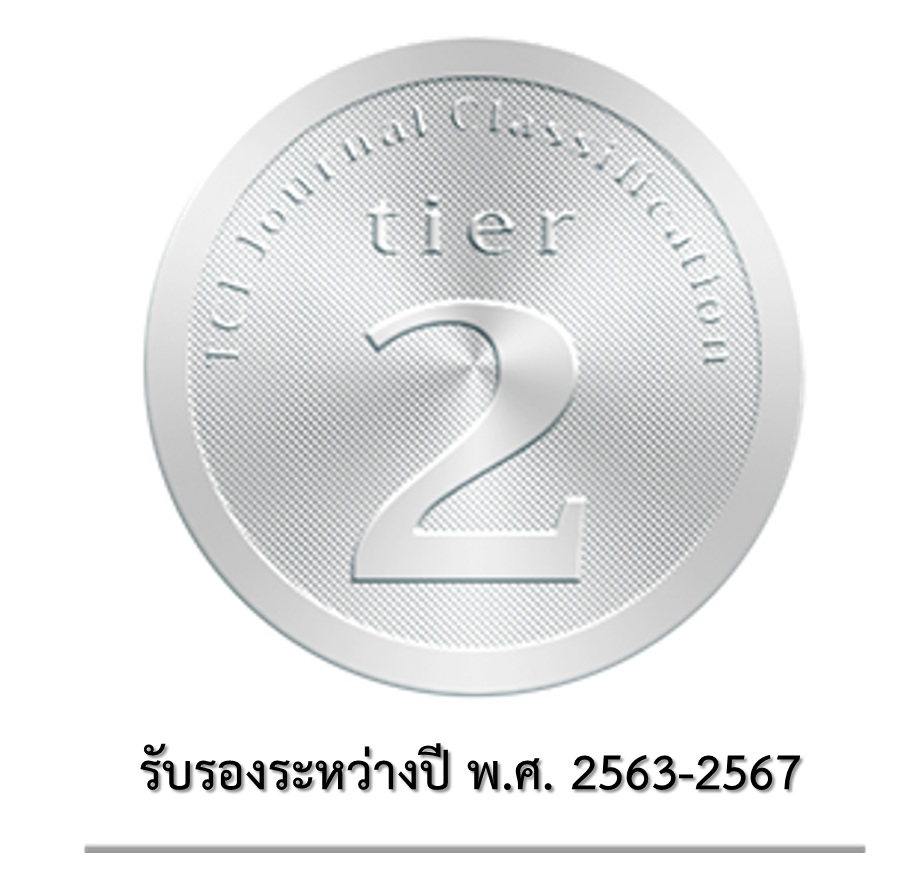การวิเคราะห์ประเภทของข้อความพระบรมราโชวาท ในรัชกาลที่ 9 ที่ พระราชทานในพิธีพระราชทาน ปริญญาบัตรของมหาวิทยาลัยในประเทศไทย
##semicolon##
การวิเคราะห์ข้อความ##common.commaListSeparator## ประเภทข้อความภาษาไทย##common.commaListSeparator## ข้อความพระบรมราโชวาท รัชกาลที่ 9Abstract
บทความวิจัยนี้มีวัตถุประสงค์เพื่อวิเคราะห์ประเภทของข้อความพระบรมราโชวาท รัชกาลที่ 9 ในพิธีพระราชทานปริญญาบัตรของมหาวิทยาลัยในประเทศไทย ใช้การวิเคราะห์ภาษาระดับข้อความตามแนวทางภาษาศาสตร์ตามหลักเกณฑ์ภาษาของลองเอเครอ (1968) 9 หลักเกณฑ์ และหลักเกณฑ์สังคมของเพอร์ซัน (1993) 3 หลักเกณฑ์ โดยใช้ระเบียบวิธีวิจัยเชิงคุณภาพที่คัดเลือกข้อมูลแบบเจาะจงจาก“ประมวลพระบรมราโชวาทและพระราชดำรัสของพระบาทสมเด็จพระเจ้าอยู่หัว ระหว่าง พ.ศ. 2493-2548” ของกองทุนบำเหน็จบำนาญข้าราชการ (2550) โดยมีเกณฑ์การคัดเลือกข้อมูล 3 เกณฑ์ คือ 1) คัดเลือกข้อมูลพระบรมราโชวาทฯ ที่รัชกาลที่ 9 พระราชทานให้กับมหาวิทยาลัยในประเทศไทยทั้งในกรุงเทพฯและภูมิภาค 2) คัดเลือกข้อมูลพระบรมราโชวาทฯ ปีที่มีข้อมูลมากที่สุด คือ พ.ศ. 2520 และ 3) คัดเลือกข้อมูลพระบรมราโชวาทฯ ที่รัชกาลที่ 9 พระราชทานให้กับมหาวิทยาลัยของรัฐ ไม่รวมมหาวิทยาลัยเปิดและสถาบันทางเทคโนโลยี จำนวน 19 องค์ 10 มหาวิทยาลัย ผลการวิเคราะห์พบว่าพระบรมราโชวาทฯ เป็นข้อความประเภท “คำสอน” พบรูปภาษาที่ชี้หลักเกณฑ์จำนวน 1,940 ครั้ง เรียงลำดับรูปภาษาที่เป็นตัวชี้หลักเกณฑ์จากลำดับมากสุดไปหาน้อยสุด 1) หลักเกณฑ์อนุพากย์บอกเล่า 703 ครั้ง 36.24% 2) หลักเกณฑ์การเชื่อมโยงภายในข้อความ 642 ครั้ง 33.09% 3) หลักเกณฑ์การใช้บุรุษสรรพนาม 211 ครั้ง 10.88% 4) หลักเกณฑ์ลำดับเหตุการณ์ตามเวลา 185 ครั้ง 9.54% 5) หลักเกณฑ์ชุดคำสอน 69 ครั้ง 3.55% 6) หลักเกณฑ์อนุพากย์คำสั่ง 59 ครั้ง 3.05% 7) หลักเกณฑ์ชุดเหตุผล 50 ครั้ง 2.57% 8) หลักเกณฑ์การกล่าวอ้างโดยตรง 21 ครั้ง 1.08% และไม่พบรูปภาษาในหลักเกณฑ์ชุดกิจกรรม ผลการวิเคราะห์ด้วยหลักเกณฑ์สังคมของเพอร์ซัน (1993) พบว่าพระบรมราโชวาทฯ เป็นข้อความประเภท “คำสอนแบบบรรเทาหรือลดความเข้มงวด” เนื่องจากมีรูปภาษาที่ไม่ใช่คำสั่ง จำนวน 36 ครั้ง 61.02%
##submission.downloads##
Published
##submission.howToCite##
Issue
Section
##submission.license##
##submission.copyrightStatement##
##submission.license.cc.by-nc-nd4.footer##


